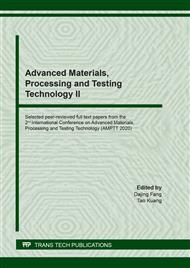p.321
p.330
p.340
p.349
p.357
p.363
p.371
p.379
p.386
A Novel Approach to Characterize the Quantity and Distribution of Microorganisms in Microbial Self-Healing Cementitious Materials
Abstract:
Microorganisms can effectively heal the cracks of cementitious materials through the formation of calcium carbonate by microbial mineralization deposition, which has a wide application prospect in cementitious materials. In order to analysis the activity change and distribution of microorganisms in cementitious materials, this paper prepared cement pastes incorporated microbial powder, and extracted microorganisms by pre-crushing, grinding and ultrasonic, at the age of 3, 7 and 28 days respectively. The relationship between the optical density and effector cells is near linear fit, reflecting the activity change and specific distribution of microorganisms in cement paste specimen of different ages. The in-depth research on the activity change and distribution of microorganisms in the microbial cementitious materials can effectively characterize the microorganisms in the cementitious materials, which has a guiding role in microbial self-healing cementitious materials.
Info:
Periodical:
Pages:
386-391
Citation:
Online since:
January 2021
Authors:
Price:
Сopyright:
© 2021 Trans Tech Publications Ltd. All Rights Reserved
Share:
Citation:


